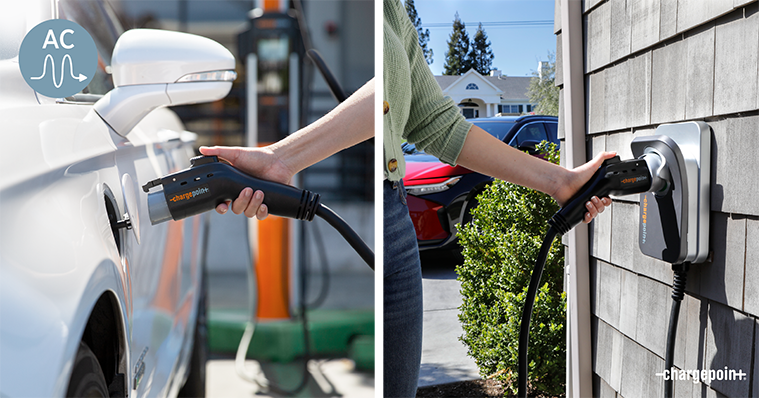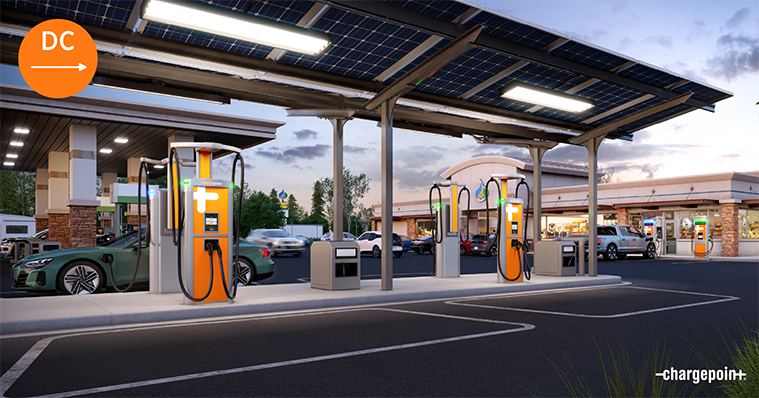
So you’ve met our newest fast charger, ChargePoint Express Plus, with its sleek design and quick charge. Maybe you’re even starting to think that all your charging sessions from here on out will be fast — but hold on, not so fast! We’re here to bust some common DC fast charging myths and help you better navigate the e-mobility world.
1. Fast charging is the main way to fuel your EV — BUSTED
More than 80% of all EV charging happens at home or work. Cars spend a lot of time parked at these locations, providing more than enough time to fill up using Level 2 AC charging speeds, which provide about 40 kilometres or 25 miles of range per hour. Charging at home, work and wherever you’re already going around town is the most convenient way to fuel up on a daily basis. DC fast charging is ideal for road trips, quick stops and when you need to fill up quickly. All types of quick-stop businesses, from fuel and convenience retail to quick-serve restaurants, offer fast charging to better serve their drivers. Level 2 charging, however, is still ideal for locations where people stay parked for longer periods of time, such as shopping malls.

2. Fast charging is always better — BUSTED
Just like humans, batteries prefer to operate at comfortable temperatures, typically between 20 to 25 degrees Celsius. Fast charging delivers a lot of power, which can create heat that will “stress” batteries more than AC charging. Some vehicles also have battery conditioning designed to get batteries to the optimal temperature for charging. Whilst heat stress has minimal impact on battery life over time, it's still a good idea to rely on Level 2 for day-to-day charging.
3. More kilowatts are always better — BUSTED
You can pile on the kilowatts, but more power doesn't necessarily mean you'll get charged up faster. DC chargers have the same built-in precautions as any other EV charger: They only deliver as much power as your car can handle. So even though a certain speed is advertised, some DC fast chargers may not work at that level for your vehicle. Most EVs on the market cannot charge at 350 kW, for example.

4. Every car charges at the same speed — BUSTED
Every car has a different battery voltage and fast charging capacity (and most plug-in hybrids can’t fast charge at all). Each car’s battery management system tells a fast charger how much power the car can take in at a given time. The power a car can take in is limited by the battery voltage and current it can accept. In many cases, DC chargers have more charging capacity available than a vehicle can take. Charging is also affected by temperature and the charging cable amperage, which is another reason DC fast charging curves vary over time.
5. Temperature doesn’t matter — BUSTED
As mentioned, temperature is very important to batteries. So if you’ve been driving at highway speeds for a while, your battery will probably be too hot to charge at optimal speeds right away. Likewise, if your battery’s been sitting in the cold for a while, it’ll also charge a bit more slowly until it warms up. Remember your battery’s sensitivity to temperature and give it a chance to warm up or cool down.
Whilst faster is not always better, never be afraid to fast charge when you need to. When you're on a long road trip or need to get charged up quickly around town, use the ChargePoint charging map to find your next DC fast charge.

